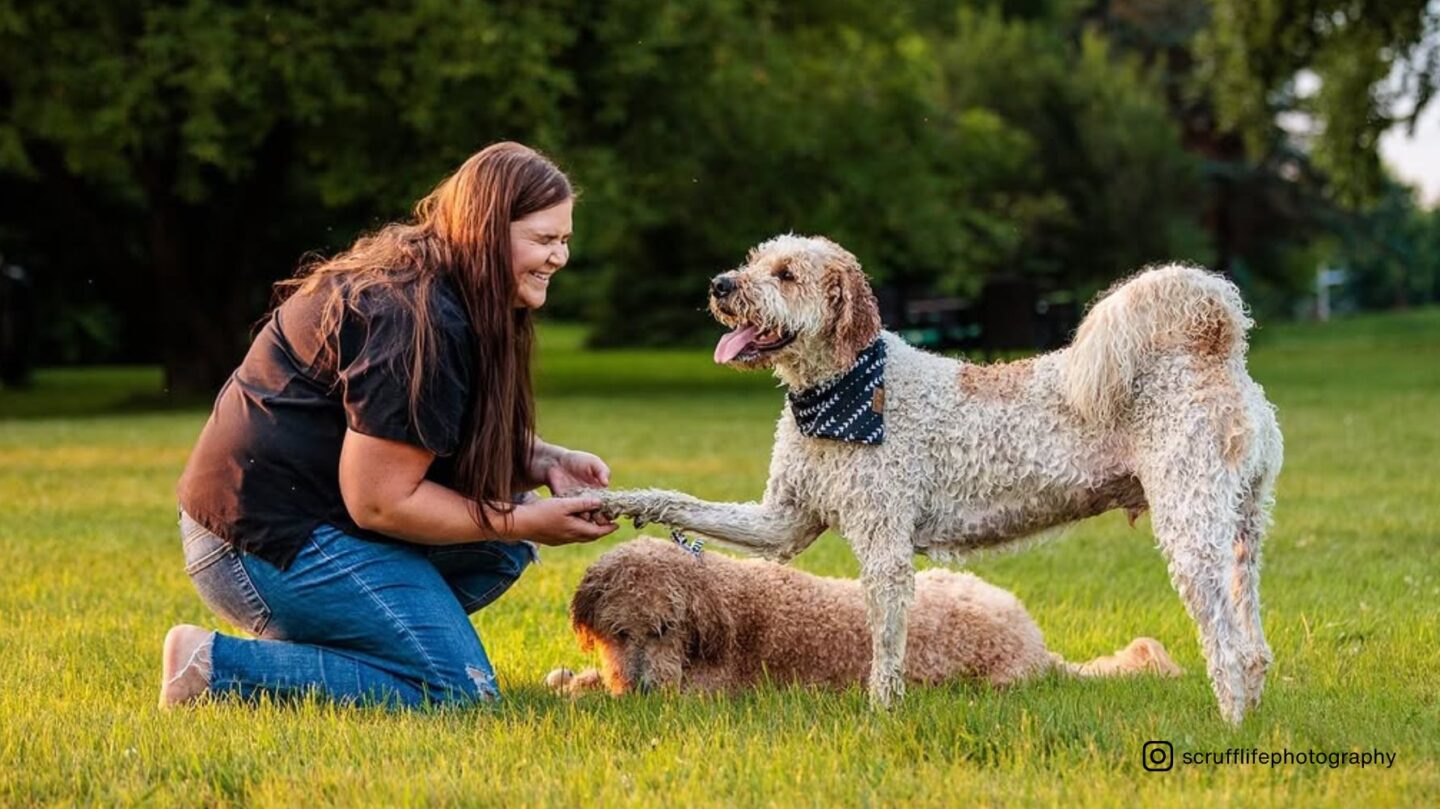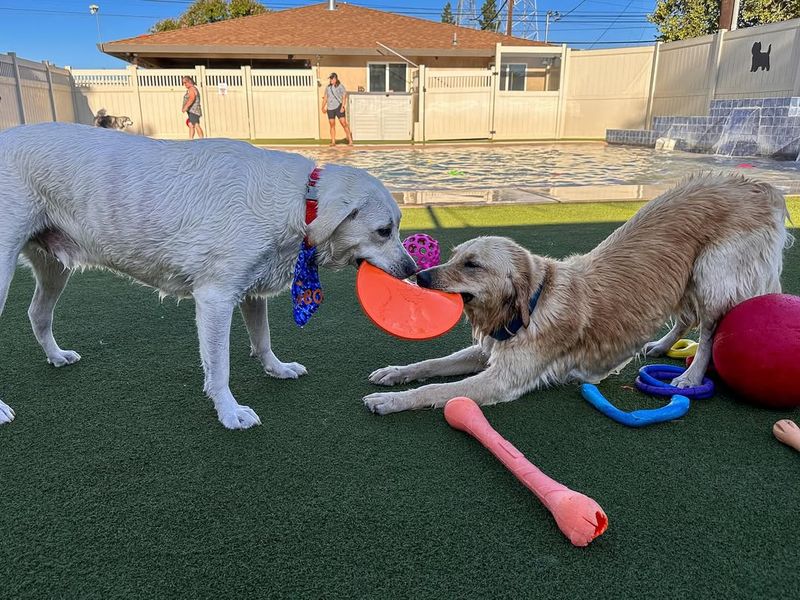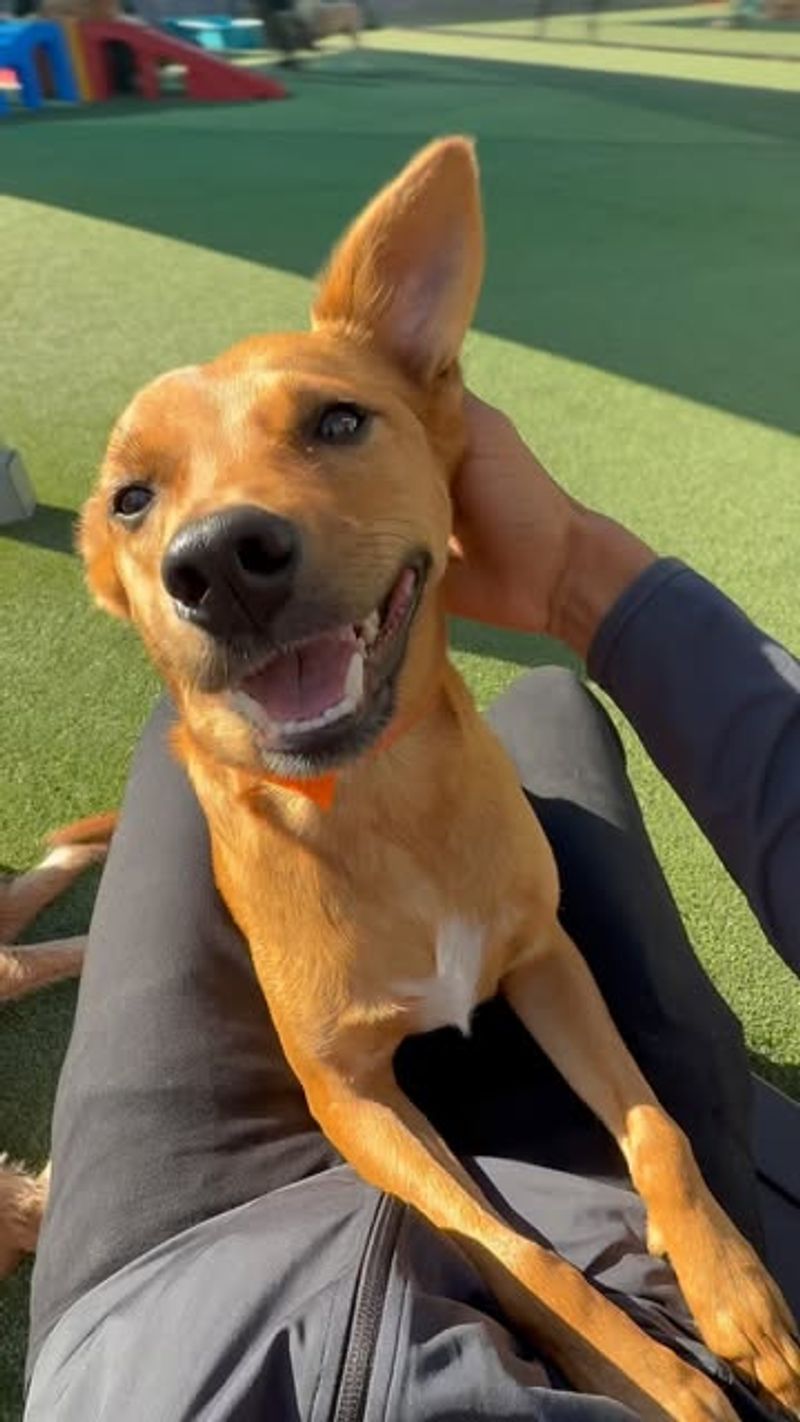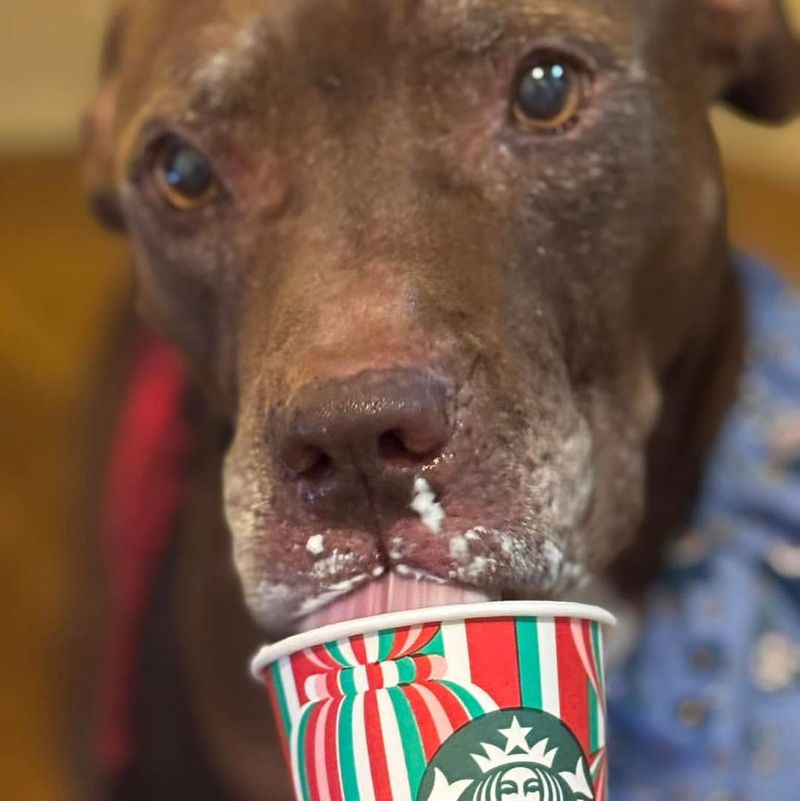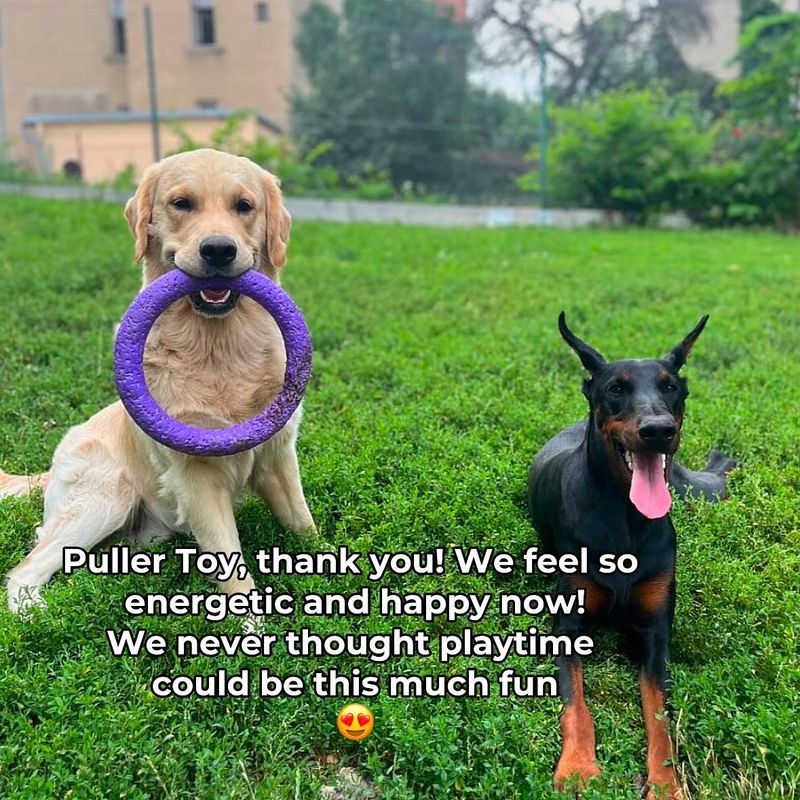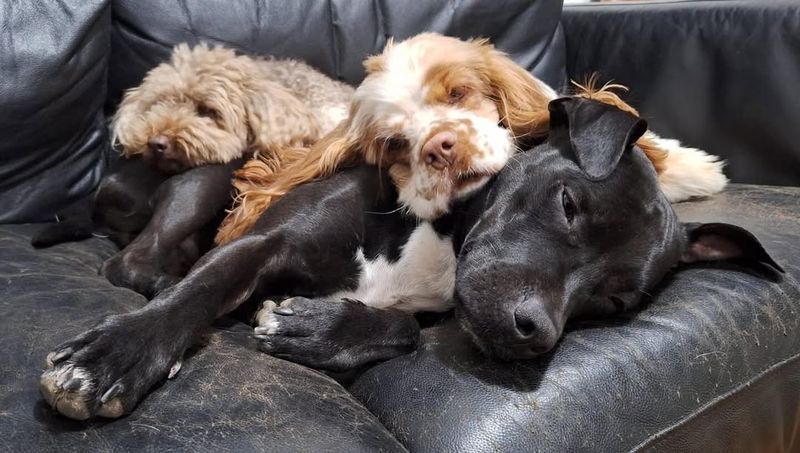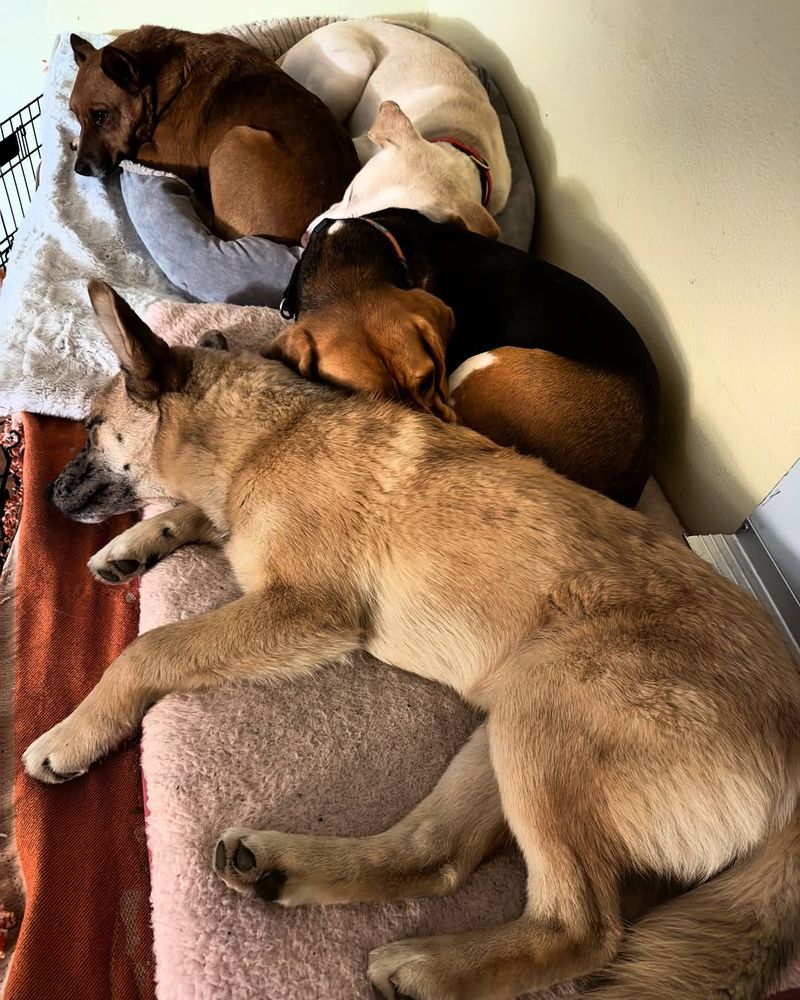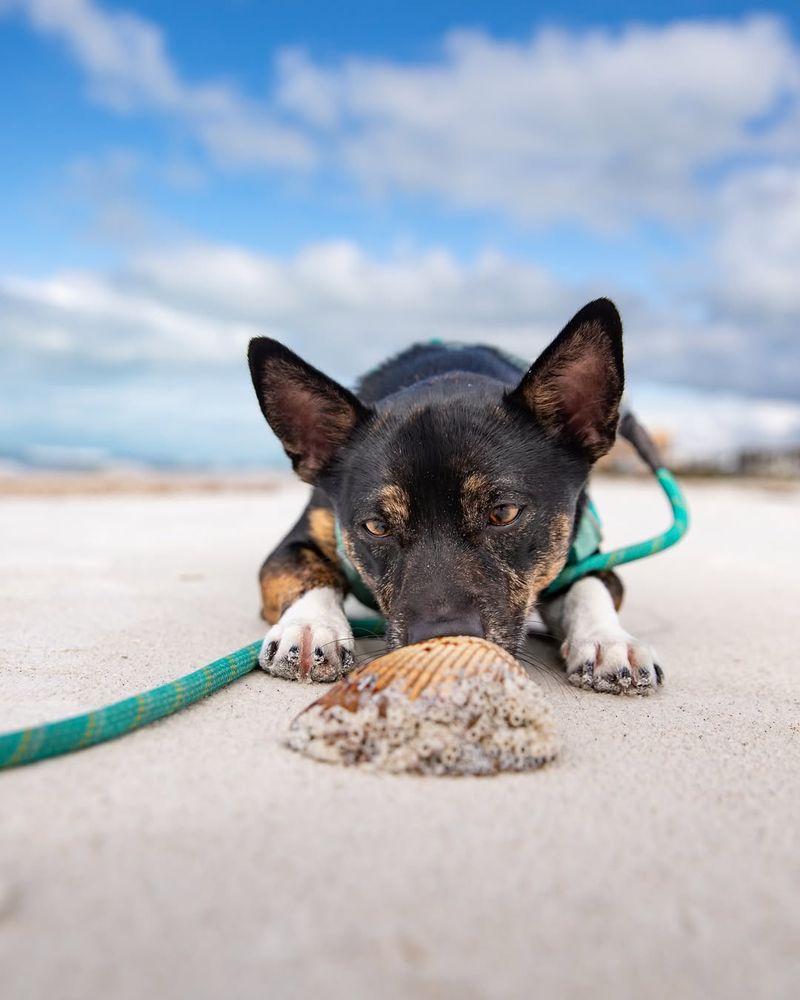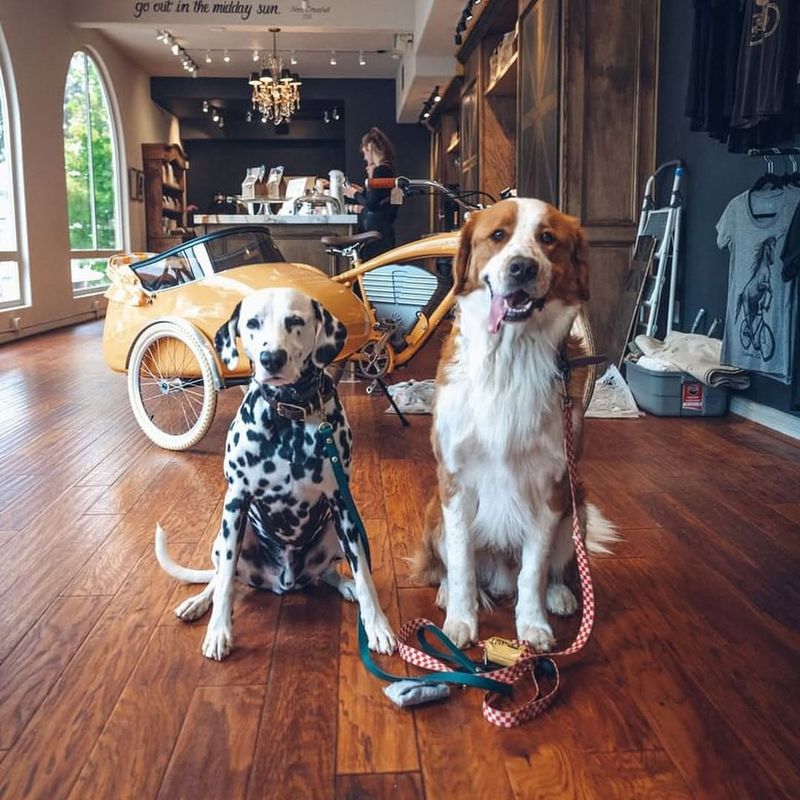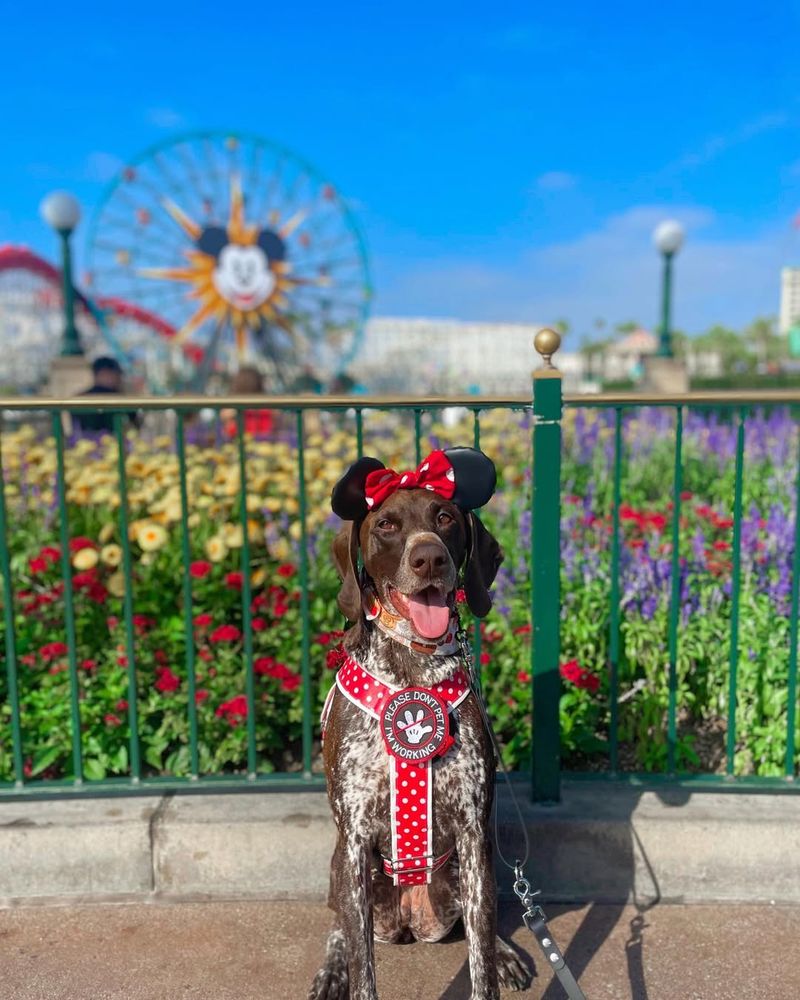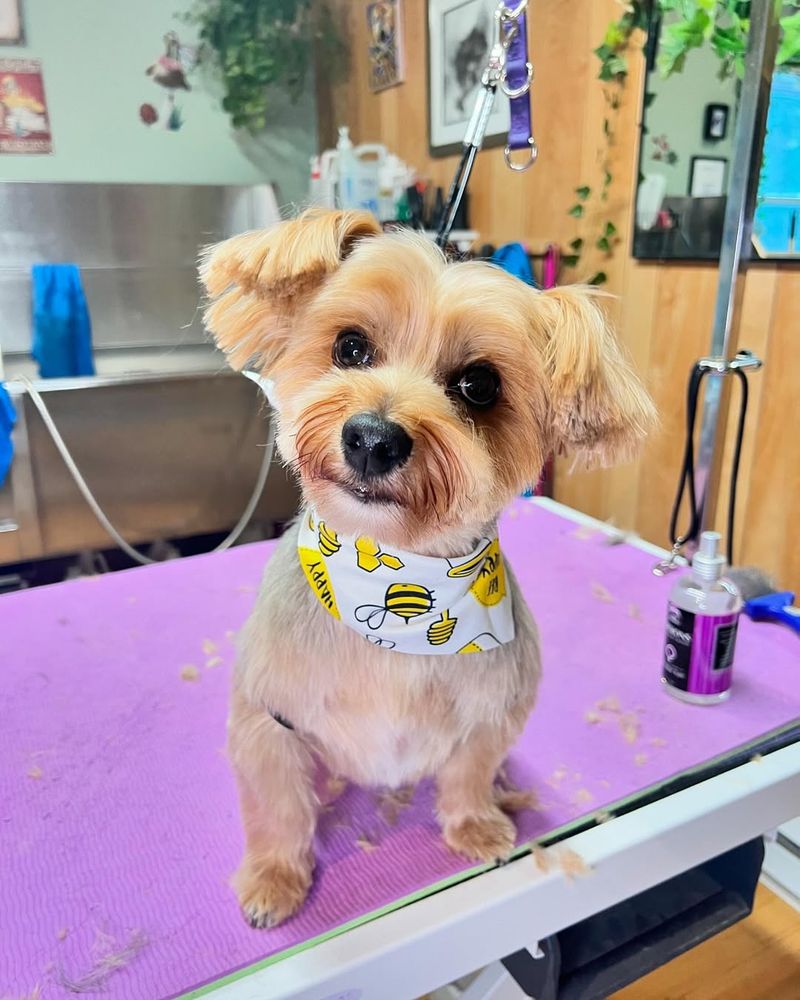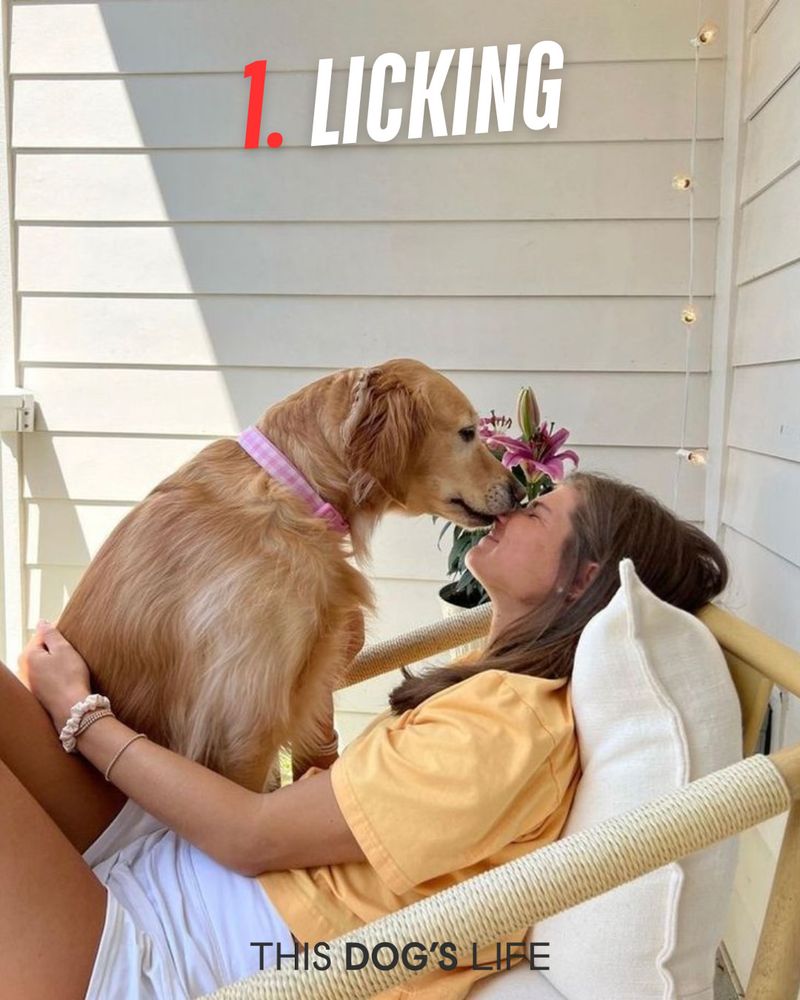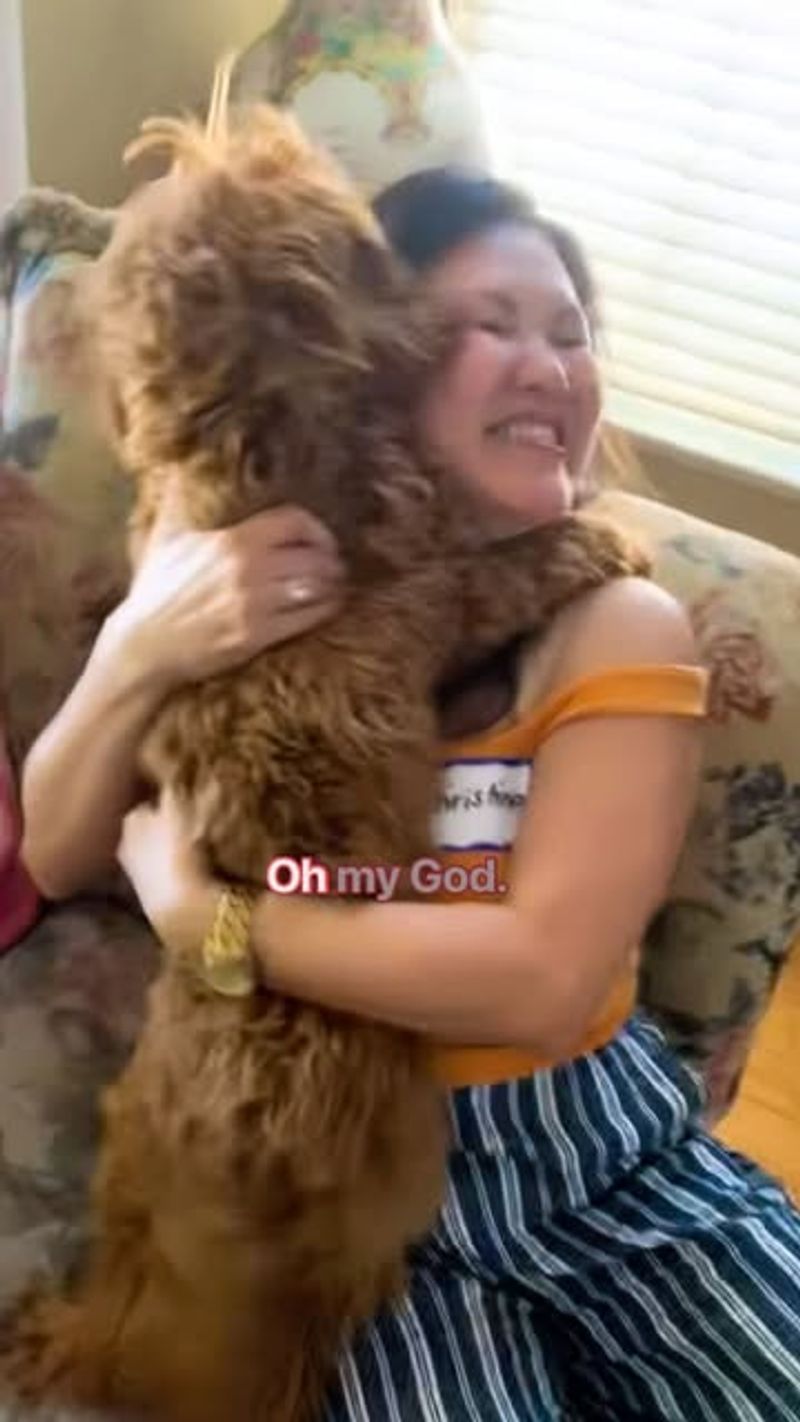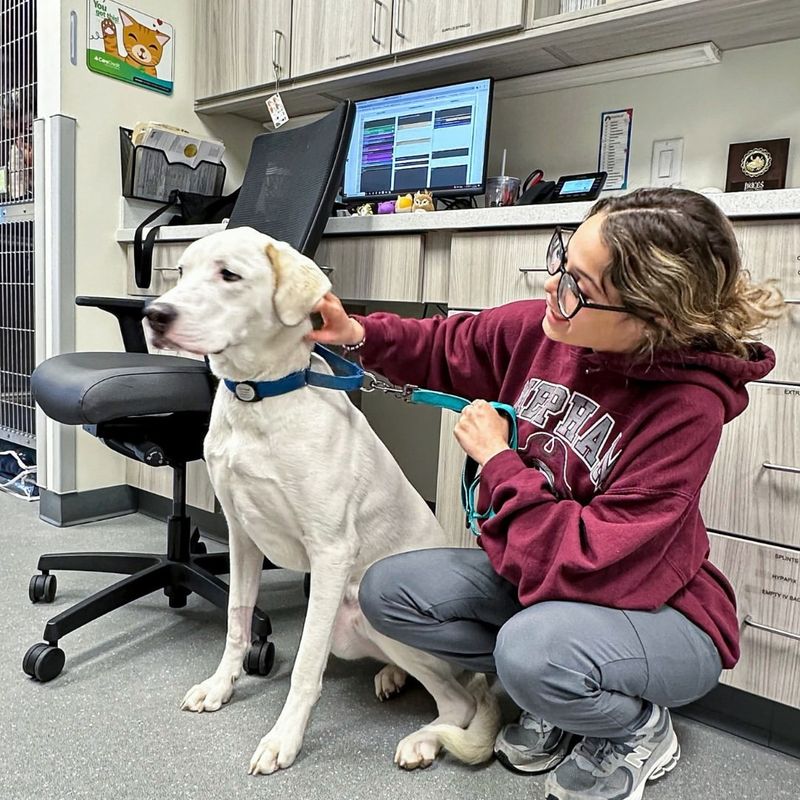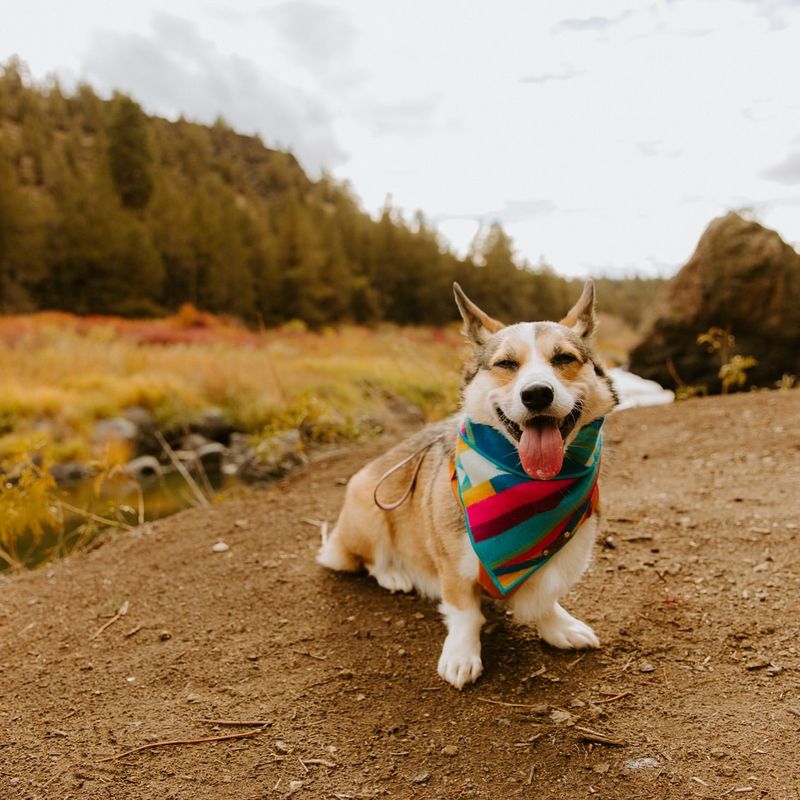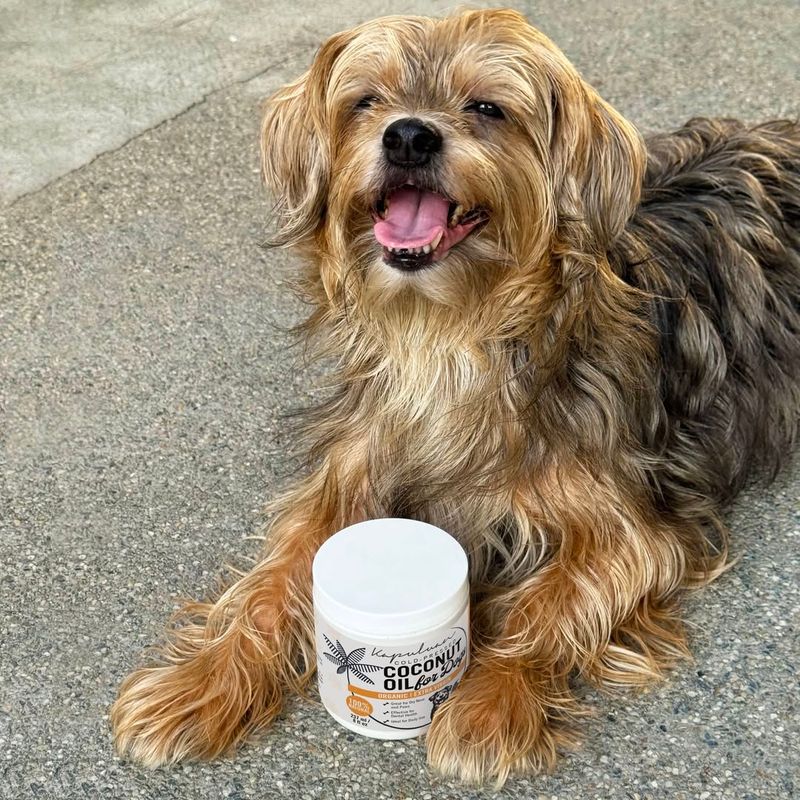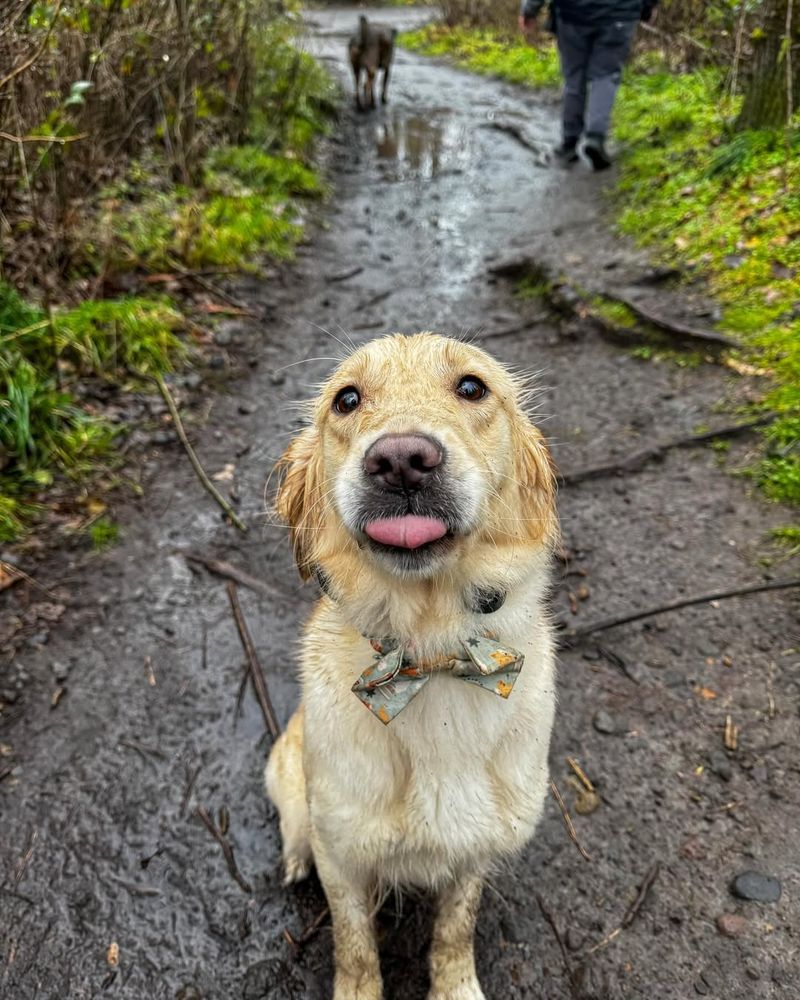Is your furry friend wagging its tail like never before? Ever wondered if those adorable puppy eyes are sparkling more than usual? Dogs, much like humans, have their own unique ways of expressing joy. From subtle gestures to overt expressions of happiness, understanding these signs can strengthen the bond you share with your pet. Here are 19 signs that your dog might be happier than ever, with tips on how you can maintain this joyful companionship.
Wagging Tail Enthusiastically
A dog’s tail is an expressive tool, and when it wags vigorously, it often signals joy. If your dog greets you with a tail that sways energetically, it’s a clear indication of happiness. Some breeds have naturally active tails, but note the difference in speed and enthusiasm. A happy wag is usually loose, with the tail relaxed and moving in broad sweeps. In contrast, a stiff or tucked tail could denote stress or fear. Simply observing your dog’s tail behavior can provide insights into their emotional state, ensuring you maintain a joyful connection.
Playful Bowing
When a dog lowers its front legs while keeping its rear end up, it’s showing a playful bow, an invitation to play. This posture is a universal canine gesture signaling fun and affection. If your dog frequently exhibits this behavior, it suggests a happy and playful mood. Encourage this playful nature by engaging in games or activities. By responding to their cues, you can strengthen your connection and enhance their wellbeing. Play bowing is not just a sign of happiness but also a way for your dog to communicate its friendly intentions and readiness for joyful interaction.
Relaxed Body Language
A relaxed dog displays contentment through its body language. Look for signs like a loose, wagging tail, soft eyes, and a relaxed posture. If your dog frequently rolls onto its back, showing its belly, it’s a sure sign of trust and happiness. This behavior indicates that your dog feels safe and secure in its environment. Encouraging this relaxation can be as simple as maintaining a peaceful home atmosphere. Your dog’s comfort and happiness often mirror your own. By being attentive to their body language, you can ensure a harmonious and joyful living environment for both of you.
Frequent Smiling Expression
Dogs can indeed smile, and a happy dog often sports an open mouth with relaxed lips. This expression is similar to a human smile and usually indicates contentment or excitement. If you notice your dog frequently adopting this expression, it’s a good sign that they are enjoying life. Encourage this happiness by spending quality time together in environments they love. A smiling dog is often a reflection of a well-cared-for pet. Understanding these cues can deepen your connection, ensuring that your furry friend continues to enjoy a life full of happiness.
Eager to Eat
A healthy appetite is often a sign of a happy dog. If your pet eagerly anticipates meal times and finishes their food with enthusiasm, it indicates they are content. Changes in appetite could signal underlying issues, so consistent eagerness to eat is a positive sign. Maintaining a nutritious diet will support their happiness and overall health. Observe your dog’s eating habits, and consult a vet if you notice any significant changes. A joyful dog is often excited by their meals, so keep feeding times regular and enjoyable, fostering their wellbeing and happiness.
Energetic Playtime
An energetic dog is often a happy dog. Regular playtime where your dog is eager and excited to engage in activities like fetching, running, or tugging is a sign of good health and happiness. This energy shows they feel good physically and mentally. Offering a variety of toys and activities can keep them stimulated and joyful. Such playtimes also strengthen your bond and improve their fitness. Ensuring varied and frequent play sessions will maintain their zest for life, making your dog happier and healthier.
Snuggling and Cuddling
When your dog initiates snuggles, it’s a clear sign of affection and happiness. Dogs cuddle to bond, feel warmth, and express love. If your dog frequently seeks your company for cuddles, it’s a testament to their comfort and happiness. Encourage these moments, as they strengthen your emotional connection. Creating a comfortable space for snuggling, with soft blankets and a calm environment, enhances these experiences. Such moments are therapeutic for both you and your pet, reducing stress and fostering a deep sense of happiness and security.
Following You Around
If your dog follows you around the house, it’s a sign they enjoy your company and feel secure with you. This behavior shows trust and happiness in your presence. Dogs are social animals, and being with their human often brings them joy. Encourage this by engaging in interactive activities and spending quality time together. While independence is also important, your dog’s desire to be near you indicates a strong bond and a happy relationship. Understanding this need will help you nurture their happiness and strengthen your companionship.
Sleeping Comfortably
A happy dog often enjoys restful sleep in a comfortable environment. If your dog sleeps soundly and wakes up refreshed, it indicates they feel safe and secure. Providing a cozy sleeping area with supportive bedding can enhance their rest. Observe their sleeping patterns; a change could signal stress or discomfort. A dog that feels well-rested is generally happier and more energetic. By ensuring their sleep environment is peaceful and comfortable, you contribute significantly to their overall happiness and wellbeing, helping them lead a joyful life.
Curious and Explorative
Curiosity in dogs often reflects happiness and a healthy state of mind. When your dog eagerly explores new environments or objects, it suggests they are mentally stimulated and content. Encourage their exploratory nature by taking them to varied locations for walks and allowing safe sniffing and investigation. This behavior not only displays confidence but also contributes to their mental and emotional development. A curious dog is a happy dog, as they are constantly learning and engaging with the world around them. Such experiences enrich their life and strengthen your bond.
Friendly Towards Other Dogs
A happy dog often enjoys the company of other dogs. If your pet approaches other dogs with a wagging tail and playful demeanor, it’s a sign of happiness and confidence. Social interactions are important for a dog’s mental health and development. Regular visits to the dog park or playdates with other dogs can enhance their social skills and overall happiness. Ensuring these interactions are positive helps build their social confidence and fosters a happier disposition. Observing your dog’s behavior around others provides insights into their emotional wellbeing.
Alert and Responsive
A happy dog tends to be alert and responsive to its surroundings. Quick to react to sounds, gestures, or commands, it shows engagement and enthusiasm. This responsiveness indicates they are mentally stimulated and healthy. Training sessions and interactive games can enhance this alertness, keeping their mind sharp and happy. Ensuring a stimulating environment with regular mental challenges contributes to their overall happiness. An alert dog is often a sign of a well-balanced and happy pet, maintaining a keen interest in their environment and interactions.
Enjoying Grooming
Many dogs enjoy grooming when they associate it with positive experiences. If your dog relaxes and seems content during grooming sessions, it indicates they are happy and comfortable. Regular grooming not only ensures they look their best but also strengthens your bond. Make grooming sessions enjoyable by using gentle techniques and rewarding them with treats. A dog that enjoys being groomed is typically a happy, well-adjusted pet. Observing their reactions during grooming helps gauge their comfort levels and contributes to their overall happiness.
Licking You Affectionately
Affectionate licking is often a sign of love and happiness in dogs. When your dog licks you, it’s their way of showing affection and trust. This behavior strengthens your bond and indicates they are content in your company. Encouraging and positively responding to their licks fosters this connection. However, ensure it doesn’t become excessive or compulsive, which could indicate stress. Understanding this behavior as a sign of affection helps maintain a happy relationship, reinforcing their trust and happiness in you.
Excited to See You
Nothing says happiness like a dog that’s thrilled to see you. If your dog greets you with enthusiasm and excitement every time you come home, it’s a strong sign of happiness. This behavior shows their attachment and delight in your presence. Encourage this by reciprocating their enthusiasm with affection and play. These joyous reunions, no matter how brief your absence, reinforce their happiness and your bond. Understanding and nurturing this excitement ensures they continue to associate your presence with joy and love.
Relaxed During Vet Visits
While many dogs feel anxious about vet visits, a happy dog may remain calm and relaxed. This behavior indicates trust in you and their vet, a sign of well-being and confidence. Preparing your dog for vet visits with positive reinforcement and calm interactions can alleviate stress. A dog that handles vet visits comfortably is often healthier, both mentally and physically. Observing their demeanor in such settings provides insights into their happiness and general disposition, enabling you to address any fears or discomforts.
Approaches New Experiences Positively
A dog that approaches new experiences with enthusiasm and curiosity is typically happy and confident. Whether it’s a new environment, object, or person, a positive reaction indicates they feel secure and adventurous. Encourage this behavior by exposing them to varied experiences, fostering their adaptability and happiness. Such exposure not only enriches their life but also builds their confidence. A dog that embraces new experiences positively is often mentally stimulated, leading to a healthier and happier lifestyle, strengthening your relationship.
Healthy Coat and Skin
A shiny coat and healthy skin are indicators of a dog’s overall health and happiness. Good nutrition, regular grooming, and a loving environment contribute to these aspects. If your dog sports a glossy coat and clear skin, it shows they are well-cared-for and content. Regular check-ups and appropriate grooming routines help maintain these signs of health. Observing changes in their coat or skin can provide insights into their wellbeing. A healthy exterior often reflects a happy interior, ensuring your dog’s contentment and vitality.
Expressive Vocalizations
Dogs use vocalizations to express themselves, and happy dogs often have a wide range of noises to communicate joy. From playful barks to soft whines, these sounds indicate they are engaged and content. Encouraging appropriate vocalizations during play or interaction can enhance their expressiveness. Understanding and responding to their vocal cues fosters communication and happiness. Avoid discouraging their natural vocal tendencies, as it’s a part of their personality. A dog that vocalizes joyfully is often a happy, well-adjusted pet, enjoying its interactions and environment fully.
